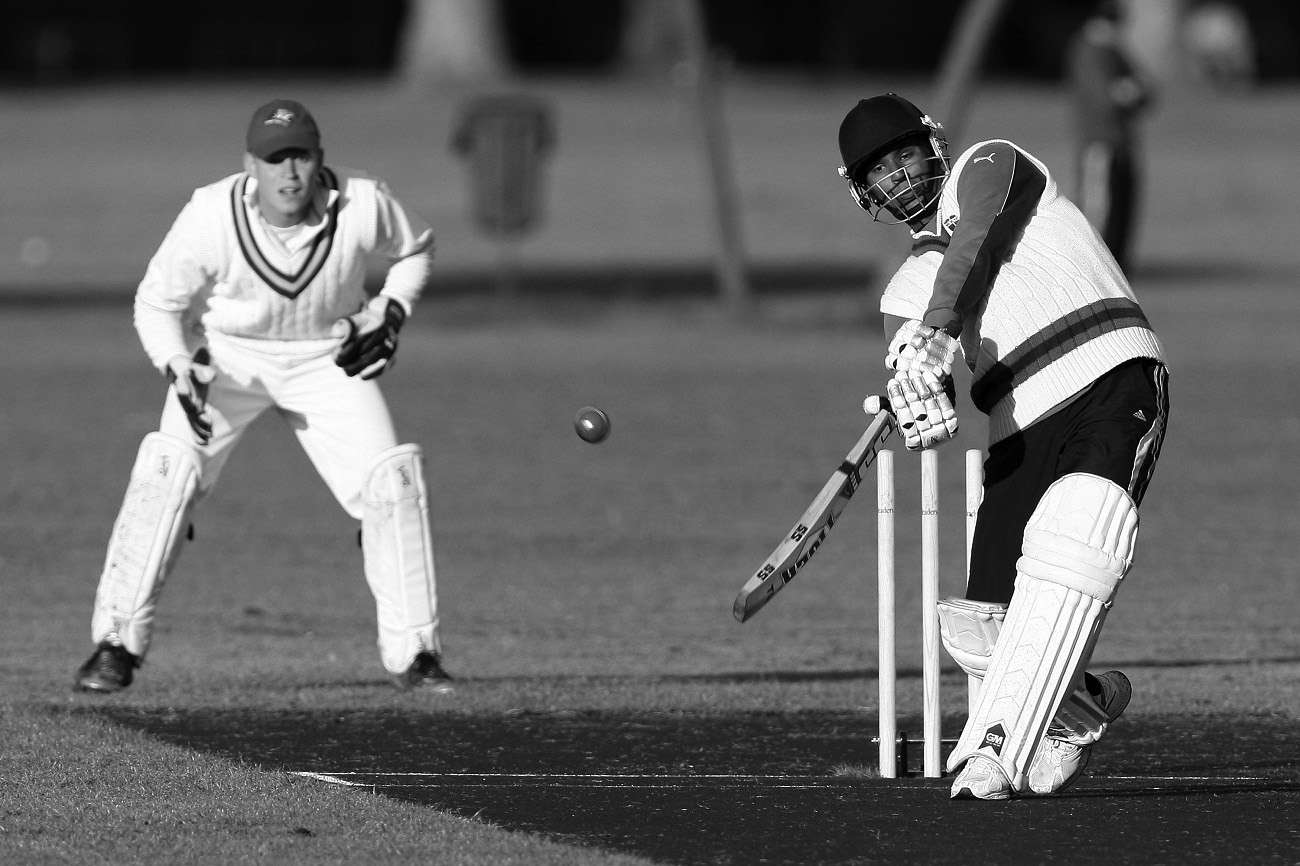1
There are three forms of cricket: the 20/20, One Day International (ODI) and the Test match, the last of which can last up to five days. In 20/20 cricket, each side has a maximum of 20 overs to score as many runs as possible. An over is a six-ball period before the bowler is changed. In ODI’s, this total increases to 50 overs a side …
2
… Which is only surpassed by the marathon Test matches, the most traditional form of the game. Each side gets a maximum of two turns at bat without an overs restriction, which in some cases still doesn’t produce a definitive winner or loser! Thus, Test matches require a greater amount of strategy …
3
… In a game played between two teams, each fielding 11 players. However, there are only 13 athletes combined on the pitch at one time—two for the batting side and 11 for the bowling side. The objective for the batting side is to score as many runs as possible, while the bowling side must collect 10 outs before the inning is complete.
4
Groucho Marx, an American comedian, went to a cricket game in 1954 and famously said, “[Cricket] is a wonderful cure for insomnia. If you can’t sleep here, you really need an analyst.” In order to combat criticisms of boredom, England introduced 20/20 cricket in 2003 in an effort to ramp up the excitement, creating shorter games, and encouraging players to take more risks.
5
The ICC (International Cricket Council) is the governing body for international cricket, the most popular form of the sport. There is no single competition to determine the world champions in Test cricket. Teams tour different countries and play series of matches, which eventually produces a world leader in the ICC rankings.
6
In the first ever official international cricket match, played in New York in 1844, Canada beat the United States by 23 runs. Though the North American rivalry has been over for the last 20 years due to funding issues, the inaugural match had nearly 20,000 spectators with $120,000 worth of bets placed.
7
Cricket was the United States’ national sport until the Civil War. Indeed, the United States’ boasted the best fast bowler in the world, Bart King, in the early 1900s, and the Philadelphian cricket team at the time was good enough to draw against English touring sides. North of the border, Canada’s first Prime Minister, John A.
8
Historically, teams would include both upper-class amateurs and working-class professionals. The amateurs generally chose not to bowl because they did not want to exert too much physical effort. Class divides extended for quite some time—as a working-class professional, Sir Len Hutton was not allowed to captain England until 1952.
9
Even though its early history was mired in classism, cricket was one of the few sports in which apartheid era South Africa was banned from official international matches. In doing so, the cricket community showed its respect for the non-white cricketing nations of the West Indies, India, Pakistan, and Sri Lanka.
10
Cricket is the oldest professional team sport in the world. It was at the heart of the British Empire, which spread a sporting culture around its colonies and the world. As a result, the primary cricket playing nations of the world are all former British colonies.









